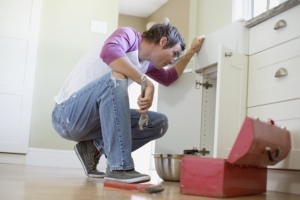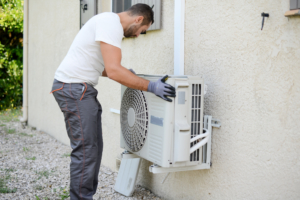Choosing between artificial grass and real grass for your outdoor landscape can be tough. Artificial grass vs. real grass is a debate many homeowners face.
Artificial grass is fake grass that looks real. It doesn’t need water, mowing, or fertilizers. Real grass is the natural stuff that grows in your yard. It needs more care but feels soft and cool.
Both have pros and cons. Various factors come into play, from water conservation to environmental impacts, natural beauty, and cost. This blog post will explore these aspects to help you make an informed decision, especially if you are looking for the best artificial grass.
Aesthetics
When talking about looks, artificial grass offers a picture-perfect lawn all year round. It stays green and neat, no matter the weather. This can be great for keeping your yard looking its best without much work.
However, some folks prefer the natural beauty of real grass. It has a way of feeling fresh and lively that fake grass can’t match. The color and texture change with the seasons, giving your yard a more organic feel.
In the end, choosing between artificial and real grass comes down to what you like to see. If you want a low-maintenance, always-green lawn, artificial might be the way to go. But if you love the natural look and feel, and don’t mind the upkeep, then real grass is unbeatable.
Landscaping Maintenance
Artificial grass hardly needs work to look good. You don’t need to water, mow, or fertilize it like real grass. This makes it an excellent choice for regions where water conservation is essential. Just a quick clean now and then keep it nice.
Real grass needs more love to stay pretty. You have to water it, especially when it’s hot, and cut it so it doesn’t get too long. Plus, keeping bugs and weeds away means using chemicals like bug spray and weed killer.
Both types have their chores, but artificial grass is way easier for busy folks. However, if you enjoy gardening and don’t mind the work, then real grass could be more rewarding for you.
Environmental Impact
When it comes to the environment, artificial grass has some ups and downs. It’s made of plastic, which isn’t good for the earth. But, it helps save a lot of water since it doesn’t need any to stay green. This makes it an excellent choice for regions where water conservation is essential.
Real grass is better for the earth in some ways. It takes in carbon dioxide and gives off oxygen, which is good for the air we breathe. Also, it helps keep the ground cool on hot days.
But, growing real grass needs a lot of water and sometimes chemicals to keep bugs and weeds away. These chemicals can hurt the environment. Choosing what’s right depends on what you think is most important.
Landscaping Cost
When it comes to money, there’s a big difference between real grass and fake grass. Artificial grass costs more at the start. But, you save money later because you don’t have to water it or buy things to take care of it.
Real grass is cheaper to put in your yard at first. But, it can cost more over time. You have to pay for water and things to keep it looking nice.
In the end, think about how much you want to spend not just now, but in the future too. Both choices need money but in different ways.
Adaptability
Adaptability matters a lot when choosing between artificial and real grass. Think about how your outdoor space will be used and what it should handle. Playing sports, pets, and parties all affect your lawn.
If your yard gets lots of foot traffic, artificial grass is tough and can bounce back easily. It doesn’t get muddy or worn out like real grass does. This means it stays looking good, even after a big family BBQ.
Real grass is better if you like changing things up. You can plant flowers or even put them in a veggie garden. It’s all about what works best for your lifestyle and how you use your outdoor space.
Comfort and Safety
When picking between artificial grass and real grass, how it feels underfoot is a big deal. Artificial grass can get really hot in the sun, making it uncomfortable in summer. But, it’s always smooth and free of things like sticks or stones that might hurt your feet.
Real grass is soft and cool, which feels nice on hot days. But it can get uneven with holes that might cause trips and falls. It’s great to play on because it’s softer if you take a tumble.
Safety is also important to think about. Artificial grass doesn’t attract bugs and pests like real grass does. This means fewer bug bites and less chance of running into something that might sting or bite. With real grass, you have more wildlife in your yard, which is nice for nature but something to remember if you’re outside a lot.
Long-Term Considerations
When thinking long-term, it’s important to consider how your choice will affect your yard years from now. Artificial turf stands up to harsh sun and heavy use without getting worn down. Check out Artificial Turf Las Vegas for more information about artificial grass.
On the other hand, real grass may need to be replanted if it gets damaged from too much play or weather. Over the years, this can add up to a lot of work and money to keep it green. Real grass also keeps your garden friendly for wildlife and pets, which is nice for nature lovers.
Thinking about the future, artificial turf seems easy because it barely needs any care. But real grass gives your home a natural look and can be better for the planet.
Artificial Grass vs. Real Grass – Making the Right Choice for Your Home
In the artificial grass vs. real grass debate, the best choice heavily depends on individual preferences and priorities. If you prioritize ease of maintenance, water conservation, and durability, artificial grass may be your best bet. Conversely, if you value natural beauty, environmental benefits, and the joy of gardening, real grass is unparalleled.
Both options offer distinct advantages and compromises. Carefully consider your lifestyle, budget, and environmental values to make a decision that best suits your home and way of life.
Discover more insights and transform your space! Explore our blogs for tips and trends you don’t want to miss.




